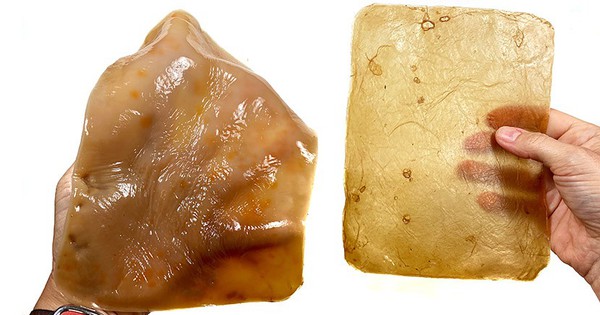Vegan Leather Alternatives

Ever glance at that leather jacket made by a vegan leather alternatives in a store window and feel a pang of eco-guilt? No, and You're not alone.
As sustainability has become a buzzword, the rise of vegan leather is reshaping our fashion choices. Let's embark on a comprehensive journey into the universe of vegan leather.
Understanding Vegan Leather
Vegan leather—often dubbed 'synthetic' or 'faux' leather—is the eco-conscious sibling of traditional leather. Initially, materials like polyvinyl chloride (PVC) and polyurethane ruled this domain.
However, the industry's pivot to more environmentally sound options has changed the vegan leather landscape dramatically.
Historical Context: The Evolution of Synthetic Leather
Leather's been with humanity for centuries (Sykes, 2019).
But as ethical and environmental concerns arose, synthetic alternatives became popular in the 20th century. Initially, these options weren't the greenest, but they paved the way for the eco-friendly materials we see today.

However, The demand for biogenic and synthetic leather alternatives is increasing, driven by a growing vegan population and concerns about animal welfare and environmental impact (Meyer et al., 2021).
For a more scientific review on the history of leather you can read this research paper by the University of Bath. This study delves into historical data to trace the growth of a company within an evolving network, demonstrating that networks aren't a new concept.
The research also emphasises that many aspects we consider modern, such as swift tech advancements, fierce competition, and "globalisation", have been present throughout history in business contexts.
Even though it's not detailed here, the study underscores the significance of networking elements in business, as noted by Ford et al in 2003.
The research suggests the importance of understanding the networking perspectives of various players. It also highlights crucial factors for success in intricate networks, regardless of the company's historical backdrop. In setting up their new venture, five standout characteristics of the Booths were:
- They meticulously pre-planned, establishing many connections that bolstered their business network positioning when they began trading.
- Their network stance was both expansive and tight-knit, aiding them in identifying possible opportunities and challenges.
- They prioritised adaptability in their network affiliations, embracing and initiating change smoothly.
- Instead of possessing the technology they contributed to, they focused on cultivating relationships to leverage it, whether related to suppliers or customers.
- Contrary to the vegetable tanners in the US and Leeds, UK, the Booths didn't restrict their networking view, ensuring they remained alert to pivotal trends and innovations.
The Innovative Vegan Leather Sources Changing the Game
Mushroom Leather
Mycelium-based leather boasts properties strikingly similar to traditional leather, from texture to durability. Moreover, it's produced in days compared to the years required to raise livestock.

Pineapple Leather (Piñatex)
Harvested from pineapple leaf fibers, Piñatex offers a dual advantage: a sustainable leather alternative and a new income source for pineapple farmers.

Apple Peel Leather
Repurposing waste from the apple industry, this leather is both sustainable and has an appealing, unique texture.

Kombucha-based Leather
Cultivated from tea, sugar, and a few microorganisms, kombucha leather offers a unique tactile experience.

Environmental Scorecard of Vegan Leather
It's vital to weigh the environmental pros and cons of vegan leather against its animal-based counterpart.
Water Usage
The livestock industry is a significant water consumer. Vegan leather materials, especially plant-based ones, require considerably less water.
Emissions
Livestock farming contributes significantly to greenhouse gas emissions. In contrast, vegan leather sources, particularly mushroom and kombucha, have negligible emissions.
The Economic Impact of Vegan Leather
The rise of vegan leather has both direct and ripple effects on global economies.
Job Creation: New industries, from mushroom farming for leather to Piñatex production, create job opportunities.
Diversified Revenue for Farmers: Materials like Piñatex offer farmers alternative revenue streams.
The Fashion Industry Embraces Vegan Leather
Fashion giants, once reliant on traditional leather, are now unveiling collections showcasing vegan leather. It's not just about sustainability; it's about meeting the evolving demands of a discerning consumer base.
Consumer Perspectives: A New Consciousness
Today's consumer is informed, environmentally-conscious, and eager to make ethical choices. This shift in mindset is driving the demand for vegan leather and pushing industries to adapt.
Challenges and the Road Ahead
While vegan leather's rise seems meteoric, challenges persist.
Durability Concerns: Some vegan leathers, especially early PVC versions, lacked the longevity of their animal counterparts.
Production Challenges: Scaling up production while maintaining sustainability is a hurdle.
Conclusion
Vegan leather is no mere trend; it's a testament to humanity's capacity for innovation, adaptation, and a sincere desire to protect our planet.
As we look to a future where sustainability isn't a choice but a necessity, vegan leather stands out as a beacon of hope in the vast fashion landscape.
Keywords: vegan leather, sustainable fashion, Piñatex, mycelium leather, environmental impact, consumer consciousness, fashion industry evolution.*








